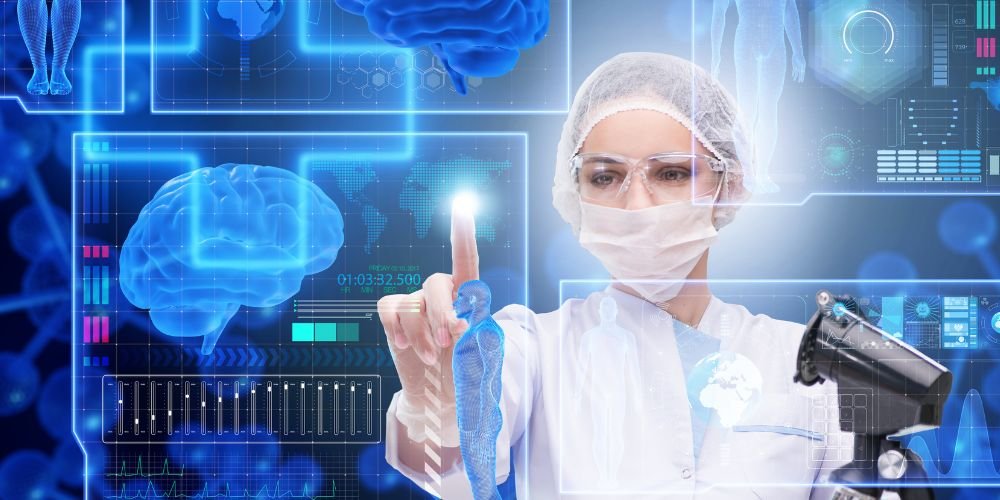In the ever-evolving healthcare landscape, remote diagnostics is a transformative force, leveraging advanced technology to bring medical expertise beyond traditional healthcare settings. This article explores the significance of remote diagnostics, its evolution, applications, challenges, and its profound impact on reshaping healthcare service delivery.
Significance of Remote Diagnostics in Healthcare
Remote diagnostics is pivotal in extending healthcare services beyond the confines of physical clinics and hospitals. By harnessing digital technologies, such as telemedicine and connected devices, healthcare providers can remotely assess, monitor, and diagnose patients, offering timely interventions and improving access to medical expertise.
Access to Healthcare in Remote Areas
One of the primary significances of remote diagnostics is its ability to address healthcare disparities by providing access to medical services in remote and underserved areas. Through telemedicine platforms, individuals in geographically isolated regions can connect with healthcare professionals, receive diagnostics, and access timely medical advice, bridging the gap in healthcare access.
Timely Intervention and Chronic Disease Management
It enables timely intervention and chronic disease management by continuously monitoring patient’s health metrics. Connected devices, wearable technology, and remote monitoring tools empower individuals to track vital signs, allowing healthcare providers to detect early warning signs, adjust treatment plans, and prevent complications, improving overall patient outcomes.
Minimizing Healthcare Costs and Burden
The utilization of remote diagnostics has the potential to minimize healthcare costs by reducing the need for frequent in-person visits, hospital readmissions, and unnecessary emergency room visits. Efficient remote monitoring can lead to proactive healthcare management, preventing costly complications and optimizing resource allocation within the healthcare system.
Evolution of Remote Diagnostics
The evolution of remote diagnostics is closely tied to advancements in telecommunications, digital health technologies, and the growing interconnectedness of devices.
Telemedicine Platforms and Virtual Consultations
The advent of telemedicine platforms has been a cornerstone in the evolution of remote diagnostics. Virtual consultations allow healthcare providers to assess patients remotely, discuss symptoms, review medical history, and prescribe treatments, creating a more convenient and accessible healthcare experience.
Wearable Technology and Remote Monitoring Devices
The integration of wearable technology and remote monitoring devices has significantly contributed to the evolution of remote diagnostics. Smartwatches, fitness trackers, and medical-grade devices enable individuals to monitor vital signs, track health metrics, and share real-time data with healthcare providers, facilitating continuous remote assessment.
Internet of Things (IoT) in Healthcare
The Internet of Things (IoT) has enhanced remote diagnostics. Connected medical devices, such as blood pressure monitors, glucose meters, and ECG monitors, communicate seamlessly with healthcare systems, allowing for real-time data transmission, analysis, and remote interpretation by healthcare professionals.
Applications of Remote Diagnostics in Healthcare
Remote diagnostics finds diverse applications across various healthcare domains, influencing primary care, specialized consultations, and the management of chronic conditions.
Telecardiology and Remote ECG Monitoring
Cardiology enables telecardiology services and remote ECG monitoring. Patients with cardiovascular conditions can wear portable ECG devices, and the data is transmitted to healthcare providers for real-time analysis, allowing for prompt intervention and adjustments to treatment plans.
Teledermatology and Skin Condition Assessments
Teledermatology leverages remote diagnostics to assess skin conditions. Patients can capture images of skin lesions or rashes using smartphones or digital cameras, which are then transmitted to dermatologists for remote evaluation, diagnosis, and treatment recommendations.
Remote Pulmonary Function Monitoring
It enables the monitoring of pulmonary function for individuals with respiratory conditions such as asthma or chronic obstructive pulmonary disease (COPD). Connected spirometers and respiratory devices allow healthcare providers to assess lung function remotely and adjust treatment plans.
Challenges in Remote Diagnostics
While remote diagnostics offers significant benefits, it also faces challenges related to technology adoption, data security, and the need for standardized practices.
Technology Adoption and Digital Divide
Adopting remote diagnostics technologies may be hindered by challenges related to technology access, digital literacy, and a digital divide. Ensuring equitable access to technology and promoting digital literacy are essential for realizing the full potential of remote diagnostics.
Data Security and Privacy Concerns
It involves transmitting and storing sensitive health data, raising concerns about data security and patient privacy. Implementing robust encryption, secure communication channels and adherence to privacy regulations is critical for building trust in remote diagnostic platforms.
Standardization of Practices and Regulations
The standardization of remote diagnostic practices and regulatory frameworks is a challenge that the healthcare industry must address. Establishing common standards for data exchange, interoperability, and regulatory compliance will contribute to the seamless integration and widespread acceptance of remote diagnostics.
Future Directions of Remote Diagnostics
The future of remote diagnostics holds exciting possibilities, including advancements in artificial intelligence, expanded use of connected devices, and integration of remote diagnostics into routine healthcare practices.
Artificial Intelligence for Diagnostic Assistance
Integrating artificial intelligence (AI) into remote diagnostics will enhance accuracy and efficiency. AI algorithms can analyze vast datasets, recognize patterns, and assist healthcare providers in interpreting diagnostic images, facilitating more precise and timely diagnoses.
Expanded Use of Remote Monitoring Devices
As technology continues to evolve, there will be an expanded use of remote monitoring devices for various health parameters. Innovations in sensor technology, miniaturization, and battery life will contribute to developing more accessible and user-friendly remote diagnostic devices.
Integration into Routine Healthcare Practices
The future of remote diagnostics involves seamless integration into routine healthcare practices. As telemedicine and remote monitoring become integral components of healthcare delivery, healthcare providers will incorporate remote diagnostics as standard tools for assessing, diagnosing, and managing various health conditions.
Conclusion
Remote diagnostics represents a paradigm shift in healthcare delivery, making medical expertise more accessible, convenient, and proactive. As technology advances, the integration of remote diagnostics into routine healthcare practices holds the promise of improving health outcomes, reducing disparities in access to care, and optimizing the efficiency of healthcare systems. Overcoming challenges and embracing future innovations will ensure that they continue to play a central role in shaping the future of healthcare.










